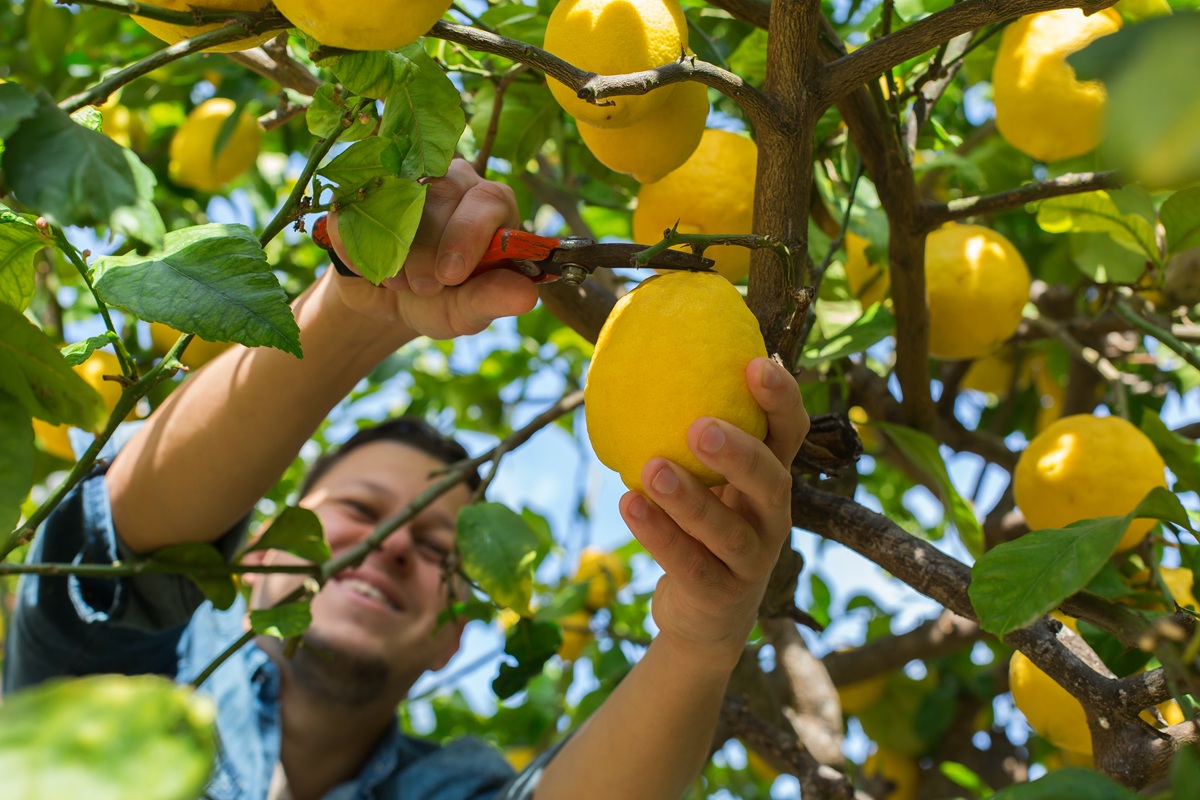Your potted lemon tree certainly brightens up your terrace or balcony, bringing that delightful Mediterranean atmosphere. However, with the arrival of spring, its leaves may start to turn yellow. This common phenomenon isn’t necessarily serious.
Have you identified the cause of the yellowing? A simple action may be enough to restore its luster. Discover how to respond effectively right now.
Why do the leaves of the potted lemon tree turn yellow?
If the leaves of your potted lemon tree show a yellowish appearance in spring, don’t panic just yet! Often, this sign simply indicates a nutrient imbalance in the soil or a space issue within the pot.
Several factors can explain this unsightly yellow color. It’s essential first to understand where the problem lies in order to provide the most suitable solution.
Common reasons for a lack of nutrients in the soil
- Your lemon tree requires several essential elements for good health. In particular, it needs iron, nitrogen, and magnesium to maintain its vibrant green foliage. As the soil in your pot gradually becomes depleted, the leaves may start to yellow.
- Overwatering can also lead to a loss of these vital minerals due to leaching. If you’re generous with your watering, be sure to check the soil moisture before each application.
- Regularly using a liquid fertilizer specifically for citrus at the beginning of spring is a great option to prevent deficiencies and meet your lemon tree’s nutritional needs.
Is your lemon tree too cramped in its pot?
Perhaps your lemon tree has been in the same pot for quite some time? The roots may become entangled and eventually lack space. This phenomenon hinders proper absorption of water and essential minerals.
A compacted soil can also cause drainage difficulties, which may lead to serious root problems or even rot.
In this case, topdressing is a simple and effective solution. This method involves replacing the top 5 to 7 centimeters of exhausted soil with a new nutrient-rich substrate. A great tip to quickly restore vigor to your lemon tree with minimal effort.
Repotting your lemon tree: the essential step to reinvigorate it
However, if you haven’t repotted your lemon tree in over two years, topdressing may not be sufficient. A complete repotting then becomes necessary.
Key steps to successfully repot
Here’s a simple and effective way to proceed:
- Gently remove the lemon tree from its current pot, taking care to gently untangle the entangled roots.
- Place your lemon tree in a new pot that is slightly larger, filled with fresh, well-draining substrate. Choose a mix of potting soil, compost, and sand specifically suited for citrus.
- Water generously after planting to eliminate air pockets and ensure a good root-soil contact.
Post-repotting maintenance: simple actions that make a difference
Have you taken the time to repot your lemon tree? Don’t let your efforts slip just yet! Continue to implement these actions regularly:
- Water moderately but frequently, without drowning the roots.
- Provide it with a liquid fertilizer specifically for citrus every month to support its growth and prevent further nutrient deficiencies.
- Stay alert for any pests and diseases to intervene quickly and naturally if necessary.
With these good practices, your lemon tree will quickly regain its stunning Mediterranean appearance and produce delicious lemons for many years to come.
Ensuring the long-term health of your lemon tree
By intervening at the right time, you can regularly anticipate and prevent yellowing problems. Don’t neglect to monitor the condition of the foliage and roots, as well as the quality of the soil in the pot.
By adapting your care routine to your observations, you’ll provide your lemon tree with the best conditions for continuous thriving.
Finally, remember that in gardening, a little regular attention is often more effective than a late intervention. Take care of your potted lemon tree; it will reward you with beauty and delicious fruit!
Have you ever encountered this problem of yellow leaves on your potted lemon tree? Share your experience in the comments! Did you adopt the repotting method or choose another solution? Your testimony could help other amateur gardeners! Also, feel free to ask your questions; we’re happy to respond.
I’m a disabled, xennial Christ-follower, slightly off kilter (but aren’t all “ar-teeests”?).
Hope you enjoy my rantings, don’t take my sarcasm too seriously and know that comments are welcome. 🙂


Leave a Reply